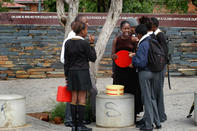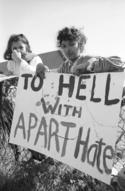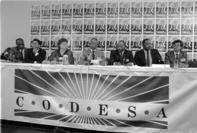The After Effects
South Africa reverberated with shock in response to the protests carried out on June 16, 1976, by thousands of school children in Soweto.

But the government at the time responded with more brute force. Prime Minister, John Vorster, told the nation that law and order would be maintained, at all costs. The police threw all caution to the wind, and by the end of that fateful day, 65 people were dead, of which 62 were shot dead by the police – 48 adults, eight youths and six children.
What were the effects of this uprising? Was it all in vain? Politicians seldom admit that they act in response to public demands. The government reacted to the 1976 upheavals by banning community, cultural and political organisations, including the media.
The government did, however, acknowledge, for the first time in the history of South Africa, the permanence of the African people in urban areas of the then white South Africa. As a consequence more schools and a teacher training college were established in Soweto and Alexandra.
Signs of Change

The mobilisation of the school children of Soweto brought to the fore amongst many African communities the injustices of an apartheid governed country.
The more the government pushed to close down subversive groups, as they were seen at the time, the harder the population pushed back. International coverage, due to reporters filing their stories, illegally out of South Africa to the world, began to put more pressure on the apartheid government. Political sanctions and boycotts ensued.
Times were changing, all because the youth of the day were not prepared to accept how they were being treated. South Africa went through a very bloody and turbulent time post 1976, change is never easy. In November 1983, the white population of South Africa voted on the acceptance of a new constitution and a tricameral parliament.
The position of prime minister was abolished and was replaced by the state president, with more power than the prime minister ever had. Talks began seven years later, to unify the country.
CODESA

92 organisations from across South Africa united on 25 October 1991 in their opposition to apartheid. They gathered in Durban and formed the Patriotic Front, a multiracial panel to deliberate on the processes and mechanism for a changeover in political leadership of the country.
The Convention for a Democratic South Africa (CODESA) was formed and held their first session in December 1991, at the World Trade Centre, in Johannesburg. Around 228 delegates from 19 political parties pledged a vow to negotiations to bring about a change for all.
On 17 March 1992, another referendum was given to the white population of South Africa, who were asked whether or not they accepted the negotiated reforms and the end of apartheid. South Africa, was finally transitioning towards a one person one vote in a united country. On 27 April 1994, after much negotiation and deliberations, the first democratic election was held in South Africa.